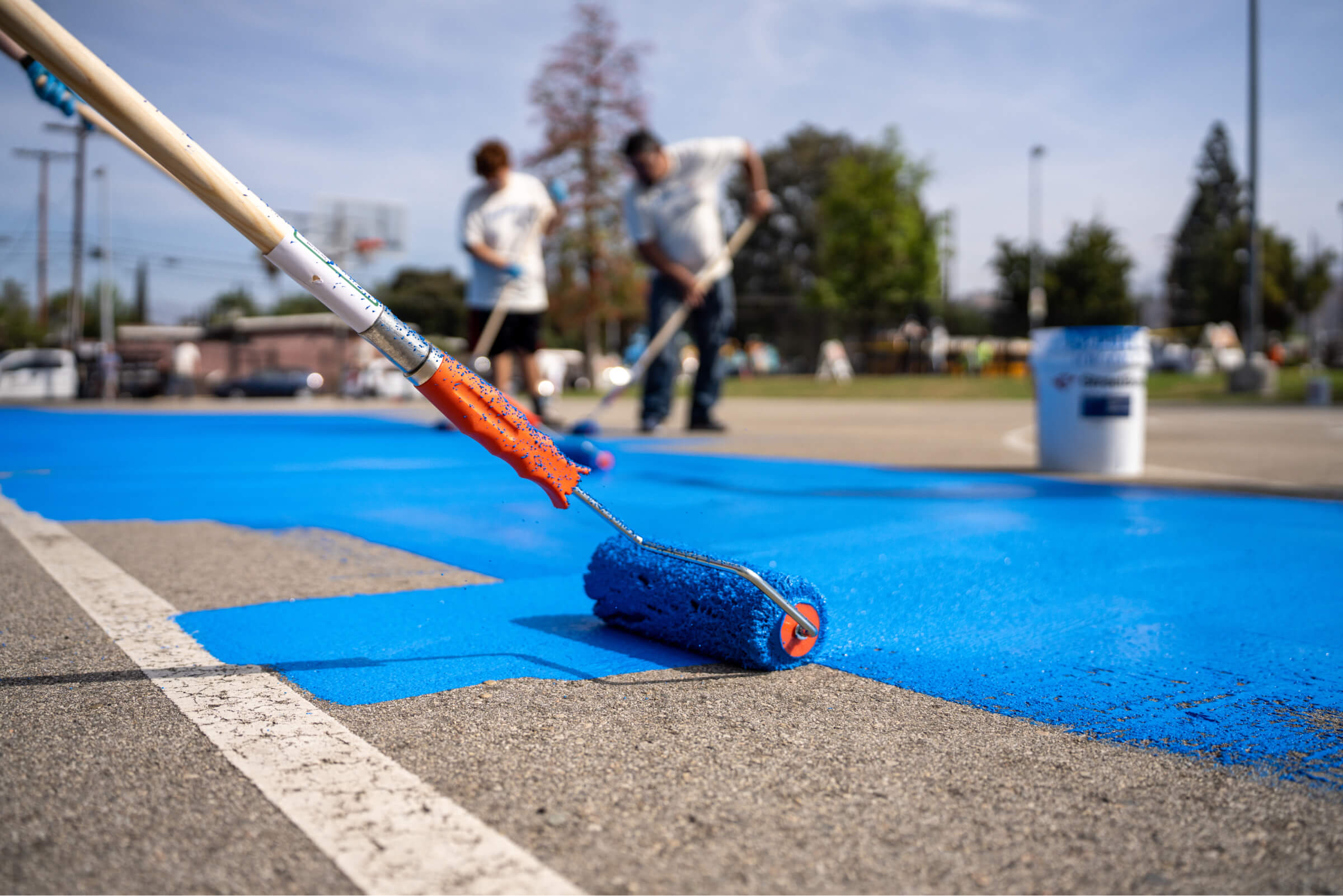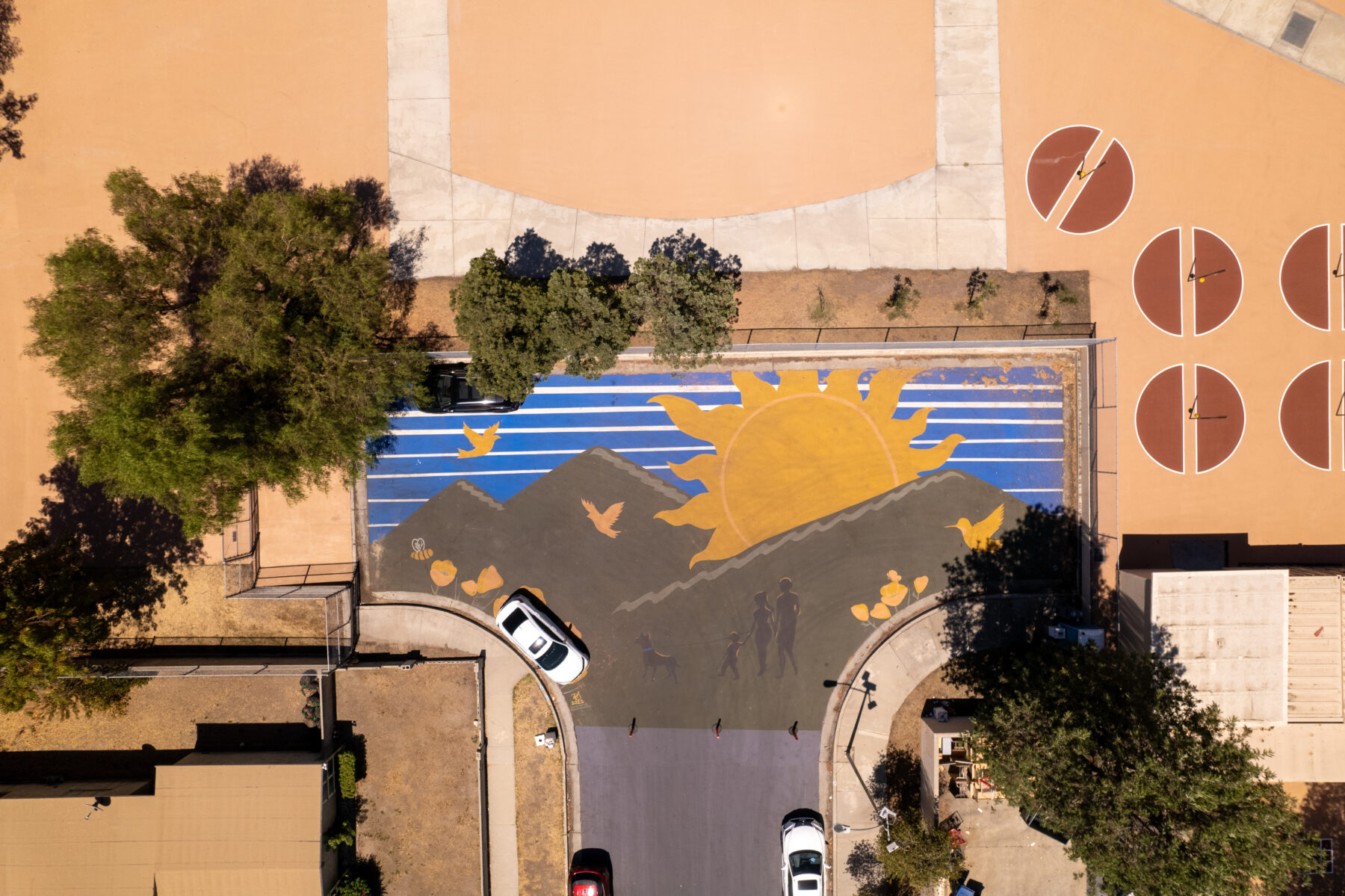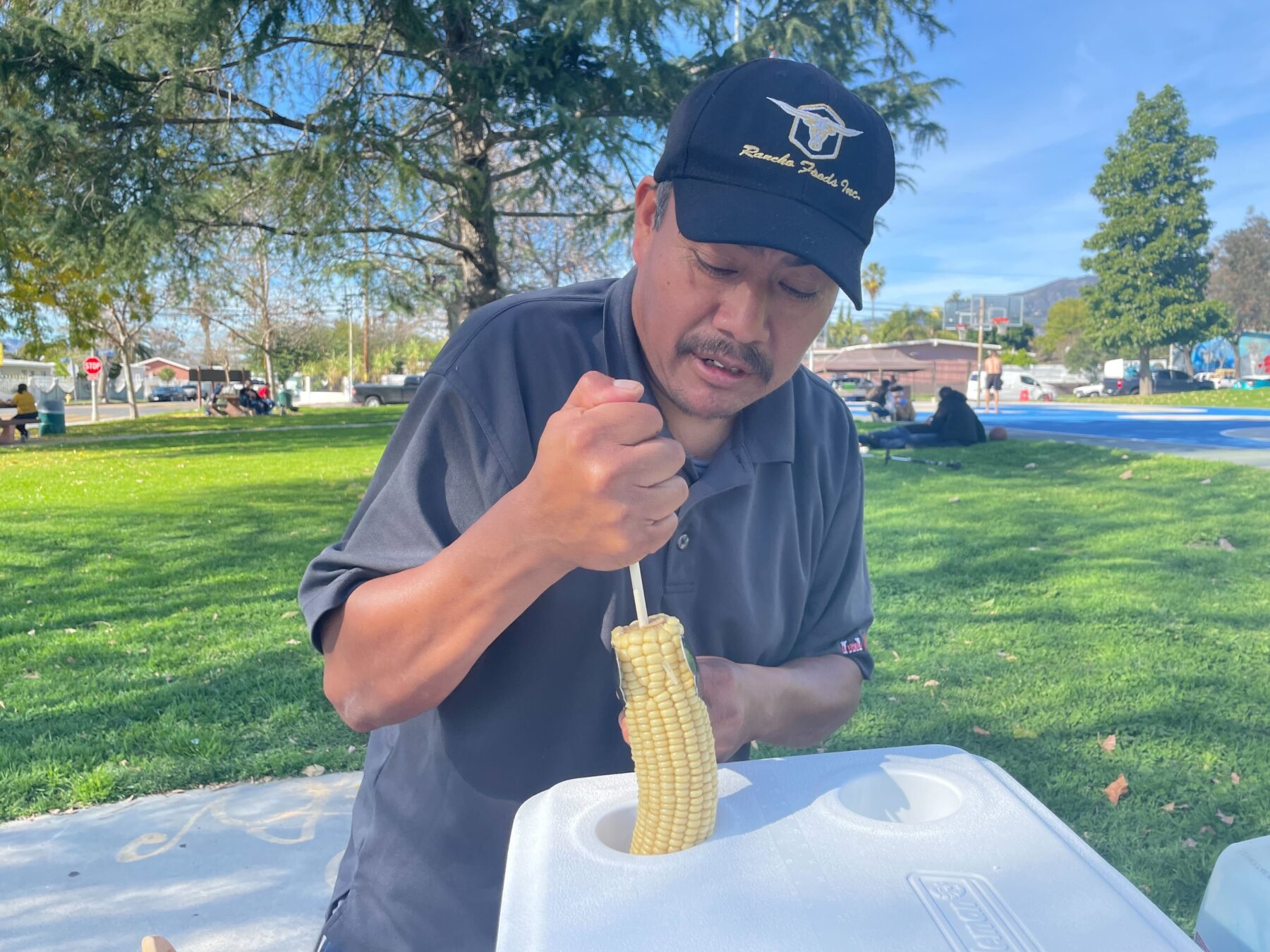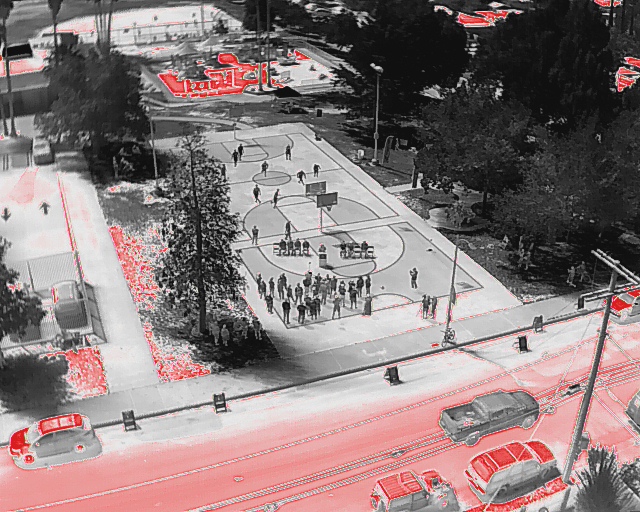
Street vendor Jose Damian has lived in the Los Angeles neighborhood of Pacoima for the past five years. He has felt temperatures hit 105 degrees. He’s pushed his cart of Mexican street snacks and shaved ice in the blazing midday sun. But the heat had never stopped him from doing his job until last summer. While heading to Sara Coughlin Elementary School, he was sweating excessively and became dizzy. He decided to get checked out at a hospital.
“All of the salt in my body was depleted,” said Damian, who drank about 15 water bottles that day. “Now I bring my Gatorades. I don’t walk too much anymore. I stop at certain spots with shade.”
Pacoima residents have long suffered from high temperatures. Cecilia Zepeda, 60, said the heat can be unbearable even into the night. Georginna Carrasco, who grew up in the neighborhood and now has two kids, said she usually takes three showers a day and keeps her apartment lights off to cool down. She sometimes has to make the difficult decision of keeping the AC off during the summer because it can get too costly.
“It does feel like it gets hotter and hotter every year, but growing up in the San Fernando Valley, you’re just used to it,” said Carrasco.
In California, the death rate for heat-related deaths was about 4.2 per 1 million people in 2022 — the highest in two decades outside of the historic North American heat wave of 2006. And the communities most in danger are low-income communities of color like Pacoima — a 2021 study of satellite images found that California’s metro areas saw greater temperature disparities between the poorest and wealthiest neighborhoods than any other Southwestern state, with tree canopy unevenly distributed across Los Angeles County. The study also found that Latino-majority neighborhoods in the Los Angeles area, like Pacoima, were 6.7 degrees hotter than neighborhoods with few Latino residents.
Pacoima ranks among the hottest neighborhoods in Los Angeles. Temperatures in what is known as “The Valley” are notoriously warmer than in other parts of the city, but Pacoima also lacks tree coverage and is home to massive public housing complexes that have been shown to warm the area. The largely working-class neighborhood of around 75,000 has also been historically impacted by a multitude of polluting industries like manufacturing, freeway construction, the nearby Whiteman Airport and a Metrolink line. Polluters like these only further impact health disparities and create heat-related illnesses.
Over the past few years, a coalition of nonprofits, community organizations and Pacoima Councilmember Monica Rodriguez’s office have come up with a plan to cool the neighborhood: a multiyear and multiphase project that was announced in 2018. It began with resurfacing 18 city blocks with a solar-reflecting coating that disperses heat. In partnership with the roofing manufacturer GAF, Pacoima’s “cool pavement” project not only reduces heat, it also brightens the community with colored pavement and vibrant murals.

The first cool pavements were laid down in July 2022 across 10 city blocks most frequented by children and seniors, including a basketball court and elementary school playground. The second phase of the project extended the cool pavements by eight more blocks. The next phase will test cool roofing, with GAF retrofitting a few homes and more to come if the test is successful. Future phases may include more tree planting and the installation of solar shingles on homes and businesses.
“Cool pavements aren’t the only solution that we at Climate Resolve advocate for, but it’s a solution that we could deploy in the short term,” said Kristopher Eclarino, the nonprofit’s project manager who helped coordinate logistics, research and data measurement for the cool pavements. “Depending on what trees are planted, it may take years for them to become mature to provide shade canopy that could also cool neighborhoods.”
The impact of the cool pavements
A year after the first cool pavements were installed, researchers found the new surfaces had had a significant impact on reducing surface temperature. On sunny days, there was an overall 10-degree reduction in surface temperature and a 2-degree reduction in ambient temperature, meaning the air feels cooler closer to the ground. On extremely hot days, there was an average air temperature reduction of 3.5 degrees. One of the more surprising effects was that an area close to where the pavements were laid also felt a minor cooling effect due to prevailing winds.
Several Pacoima residents said they hadn’t noticed the effects of the cooling pavements, and some wish they expanded further. One of the areas where Damian sells his snacks is without any reflective coatings.

Others have felt the changes. Andres De La Hoya, a senior recreation director for the city parks department who oversees the Hubert H. Humphrey Recreation Center, said he was skeptical of the cool pavements but was excited for them to be installed after looking into the positive effects. There’s a “big difference” when he walks in areas in Pacoima that don’t have cool pavements, he said. “You sweat a lot more.”
Melanie Paola Torres, organizing manager at the women-led nonprofit Pacoima Beautiful, which has worked on the project, said she and her colleagues have heard positive feedback while canvassing the neighborhood to help educate and involve the community in their plans. Some residents weren’t aware what “heat stress” is and how it affects the body, and were excited about the changes. One mom told Torres that the soles of her feet didn’t burn from the heat after the cool pavements were laid down at the park.
“All of the positive results have led to an increased demand from local residents for more coatings and public spaces,” Eclarino said. “We’ve heard from community members that it feels cooler in their neighborhoods, with some families noting that they could go outside more and enjoy the shared spaces together.”
The future of historically hot neighborhoods like Pacoima
More than 181 lane-miles of cool pavements have been laid down in Los Angeles since 2017, including in the neighborhoods of East Hollywood, Koreatown, Wilmington and Lake Balboa. While the success of the cool pavements is promising, organizers realize it’s just the beginning to tackling Pacoima’s heat.

“We know that the coatings aren’t a silver bullet,” said Eclarino. “Tackling urban heat at a community-wide level will require a toolbox of solutions in addition to shade and nature-based solutions.”
In partnership with the Santa Monica Mountains Conservancy, Councilmember Rodriguez and her staff are working toward expanding park space in Pacoima and the surrounding neighborhoods in the San Fernando Valley. Her office has already opened a new park in nearby Sylmar and has planted more trees in the area.
Another community success has been movie nights at the nearby Hansen Dam Aquatic Center, the nation’s largest municipal swimming pool. Showings of films like “Finding Nemo ” and “Lilo & Stitch” have attracted more than 2,000 people, according to Rodriguez, a lifelong Pacoima resident. “I was a fish as a kid because we had to escape the heat,” she said. “And a lot of the residents, they use our local pools for that reason.”
Pacoima Beautiful’s Torres remains hopeful for what her group and other community organizers are doing to make life more comfortable in their neighborhood.
“There are a lot of things that do burden us here,” she said, “but we’re a community full of resilient people.”


